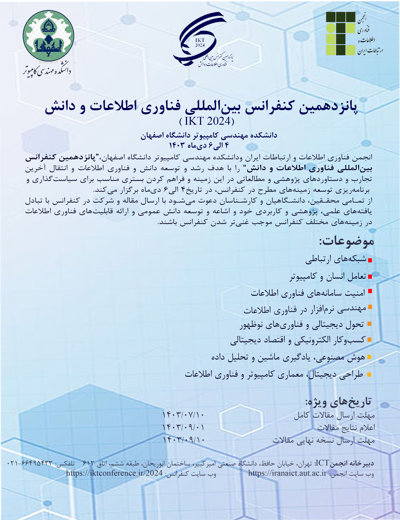0% Complete
Authors :
Keywords :
Abstract :
List of archived papers
Arash Ebrahimnezhad - Dr Hamid Jazayeriy - Dr Faria Nassiri-mofakham
Narges Honarjoo - Ali Abdari - Dr Azadeh Mansouri
Milad Khademali - Fazlollah Aghamohammadi - Marjan Kaedi - Alireza Nasiri
طه رستمی - دکتر سعید جلیلی طه رستمی - سعید جلیلی -
Engineer Reza Khalilian - Dr. Abdalhossein Rezai - Dr. Mohammadreza Talakesh
Iman Jafarian - Amirmasoud Sepehrian - Siavash Khorsandi
مهدی جعفری - احمد عبدالله زاده بار فروش
احسان شاهرخی مینا - رضا محمدی - محمد نصیری





